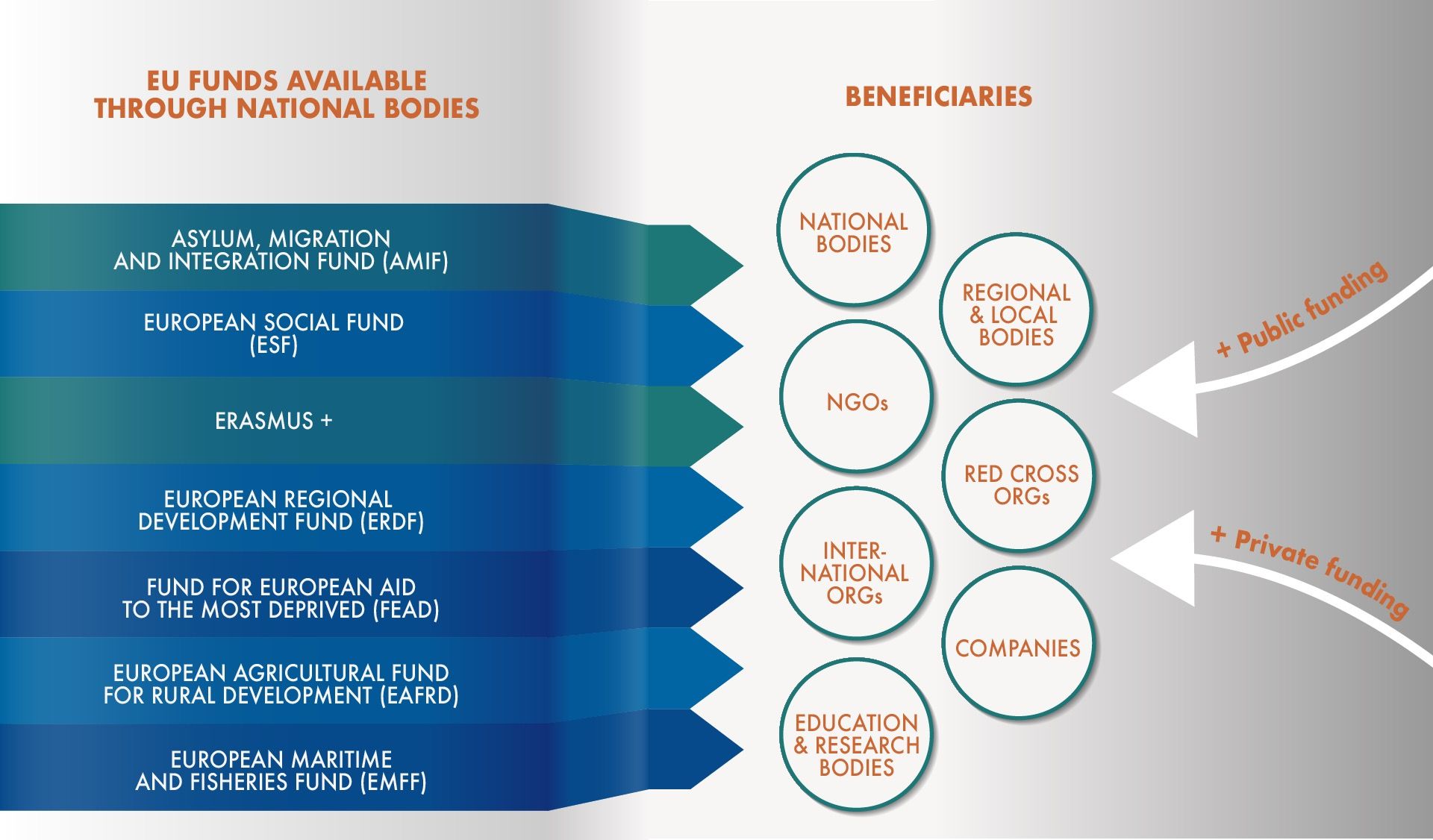Many EU funds can provide resources for projects related to the integration of migrants across the EU.
In general, EU funding can be accessed through two main channels:
- Part of the funds are made available centrally through the European Commission(EC). In most cases, these funds can be used only to put in place transnational projects on integration, involving partners from different EU countries.
- Other EU funds are made available through the different national or regional bodies in the EU countries. These funds mainly support the implementation of national projects. The projects are part of national programmes or operational programmes, which are prepared by EU countries on the basis of national needs, objectives and priorities set out at EU level and approved by the EC.
For some funds, such as the Asylum, Migration and Integration Fund (AMIF) or Erasmus+, it is possible to get funding both directly from the EC and from national authorities, depending of the nature of the project. In addition, funds managed only on the national level, such as the European Social Fund Plus (ESF+), may, in some cases, also be available to transnational projects.
You can find on the European Website on Integration (EWSI) all integration-related funding opportunities, whether available on EU level, national level, or both. At the national level, EWSI also present various private and public opportunities.
Click on the links below to explore the different types of funds in details and find all open calls for proposals.
Types of EU funds supporting the integration of third-country nationals

EU funds available through the European Commission
See more about the funds and the latest opportunities.

EU funds available throught the member states
See more about the funds and the latest opportunities.
